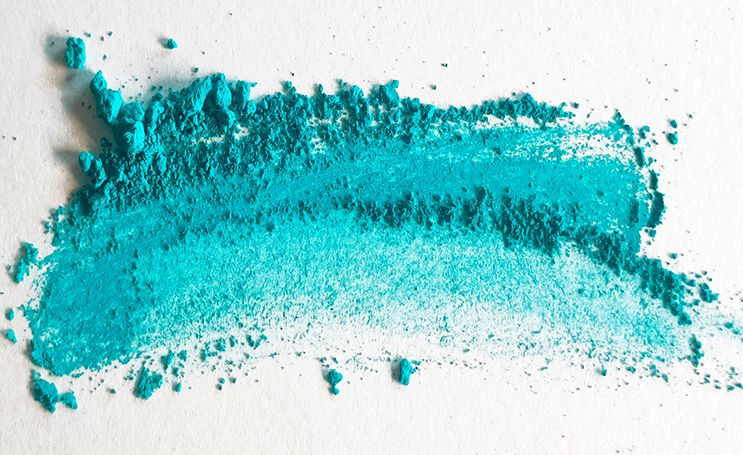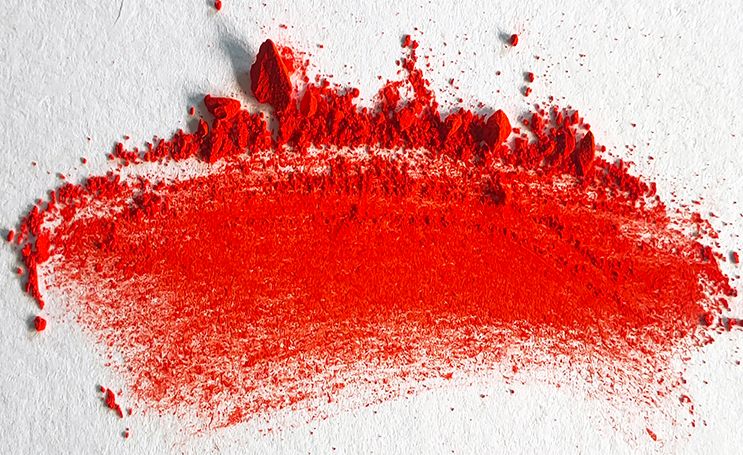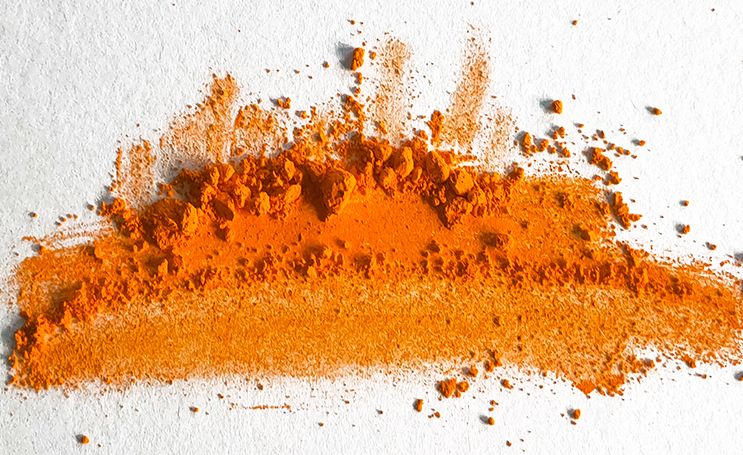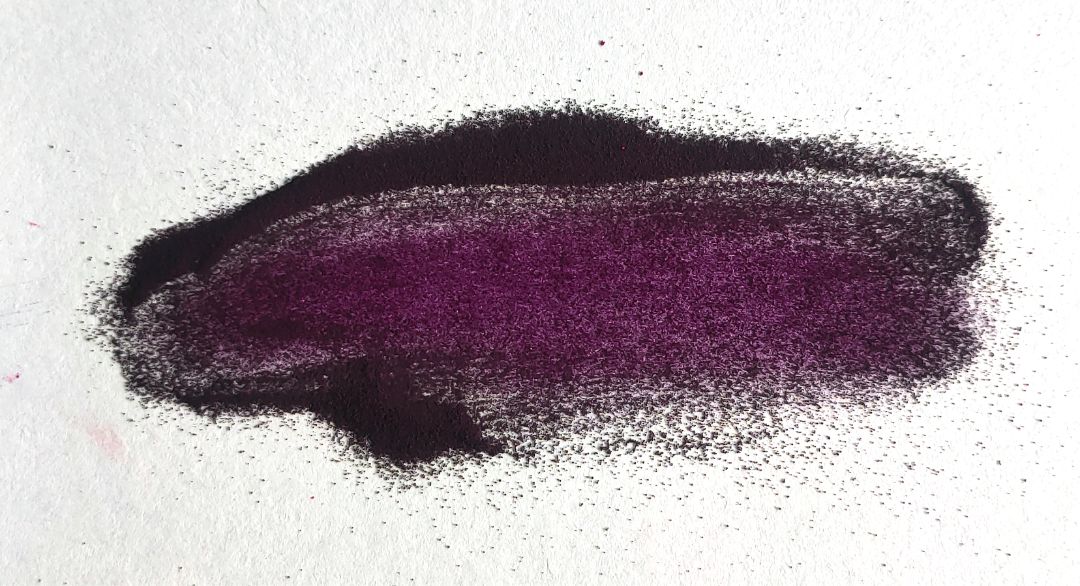SYNTHETIC PIGMENTS OF THE NEW ERA
“Slowly but surely, year after year, we have been moving forward. With the growth of science, inexhaustible stories of creativity, will the artist's hope for a perfect palette finally be achieved, step by step? " Georg Field.

With the development of chemistry at the beginning of the XVIII century and especially actively in the second half of the XIX century, a wide variety of new synthetic pigments appeared in the artist's palette. Let us give the most important historical information about the main synthetic pigments, the paints from which significantly influenced watercolour paintings during the era of the industrial development in the XVIII-XIX centuries. These are Berlin blue, cobalt, synthetic ultramarine, yellow and green pigments made of chromium, different in composition emerald greens, mars of different tones and cadmium pigments. To them was added a group of phthalocyanine and quinacridone pigments, which entered the palette of watercolour artists already in the middle of the XX century.
ZINC WHITE.
- Name of the paint based on the pigment: Zinc white (100).
PRUSSIAN BLUE.
The extremely clear colloidal soluble pigment has a high colouring ability. One part of it for two hundred parts of whitewash gave a clear blue colour. For comparison: you need to use ten times more ultramarine for painting whitewash to the same extent.
There were varieties of this pigment: mineral blue (bluemineral), or Antwerp blue (bleud 'Anvers) is a pigment complicated by zinc and magnesium salts; Parisian blue (bluede Paris, bleude Turnbull) also looked like Berlin blue, but was slightly different in composition from it.
- Name of the paint based on the pigment: Prussian blue (518).

COBALT.
The first cobalt pigment initially obtained by the French physicist Thenard (a compound of alumina with cobalt phosphate) had a much violet tone than the blue cobalt pigment used now (a compound of alumina with cobalt oxide - cobalt aluminate), it was called sapphire (bluesaphir). Cobalt also had names: royal blue (Königsblau), Leiden blue is the same as cobalt blue. Cobalt blue, called cobalt for short, had different tones from blue to dark blue, which depended on the chemical composition of the pigment.
There is another well-known cobalt pigment – ceruleum, greenish-blue or light blue.
- Names of the paints based on the pigment: Ceruleum Blue (503), Cobalt Azure Blue (532), Cobalt Blue (508), Cobalt turquoise (531), Cobalt chrome turquoise (533).



ULTRAMARINE.
- Names of the paints based on the pigment: Ultramarine (511), Ultramarine deep (521), Ultramarine violet (613).
CHROMIUM OXIDE
The silver-white metal with a bluish tint was given this name by the French chemist Louis Nicolas Vauquelin, who discovered it, probably because he received chrome by long manipulations with chromium compounds - bright yellow, orange, green.
Green chromium paint began to be used for artistic purposes only from the middle of the XIX century (there are indications of 1862). This pigment was a very stable chemical compound, did not have a bright colour. The cheap pigment of muted grey-green, olive colour was extremely opaque and it was used in all types of painting. After good thermal calcination, it did not dissolve in alkalis or acids, aggressive environmental factors did not have impact on it. It had high lightfastness.
- Name of the paint based on the pigment: Chromium oxide (704).

SYNTHETIC OCHRES.
Iron salts were probably obtained already in the XVIII century in laboratories as a by-product of chemical reactions, but the recipe for the preparation of artificial ochre was discovered in Germany at the beginning of the XIX century by a chemist Georg Field. He was the first to receive on the basis of iron oxide a number of synthetic pigments of yellow, orange and violet colours, called mars. Synthetic English, or Indian red, caput mortuum, van dick and other pigments have a similar composition.
These synthetic pigments sometimes surpass natural pigments in all respects. Strong on their own, they are also stable in mixtures with other pigments, so they are applicable in all painting techniques.
- Names of the paints based on the pigment: English red (321), Mars brown (412), Mars black (800).



CADMIUM PIGMENTS.
Cadmium pigments (from the Greek καδμεία (kadmeia) - zinc ore) - cadmium metal salts acquired this name. The oxide of the new metal cadmium was obtained in 1817 by Friedrich Stromeyer when calcining zinc carbonate, while doing a complete analysis of this substance, and then received the metal itself (pure silver-white substance, soft, heavier than iron, toxic). Cadmium pigments began to be used in the production of art paints since 1871. They have a large range of shades of pure colours: lemon, light, medium or golden yellow, dark or orange-yellow and red. All these pigments have high intensity and sheltering, as well as lightfastness and resistance high temperatures, to atmospheric influences.
- Names of the paints based on the pigment: Cadmium Lemon (203), Cadmium Yellow Medium (201), Cadmium Orange (304), Cadmium Red Light (302).



Bright, clean, saturated colours of organic pigments allow you to obtain a wide range of colours that cannot be created using inorganic pigments.
Organic pigments have a very high colouring ability, many of them are transparent. The main obstacle to the widespread use of organic pigments in painting in the past was their insufficient lightfastness. These disadvantages have been overcome by obtaining of new polycyclic compounds.
PHTHALOCYANINE PIGMENTS.
- Names of the paints based on the pigment: Azure blue (519), Bright blue (509), Azure (513), Blue (515), Turquoise Blue (507), Emerald green (713), Green Light (717).
POLYCYCLIC PIGMENTS.
Various polycyclic pigments related to perylene, anthraquinone, quinacridone, dioxazine and thioindigoid compounds have a wide colour range from yellow-green, red to violet. These organic pigments have a very high colouring capacity, low consumption, high lightfastness.
QUINACRIDONE PIGMENTS.
Quinacridone pigments were released firstly in 1958. The colour of quinacridones varies from orange-red to violet depending on the compound. All pigments of this group have a bright saturated colour, very high intensity and durability. Various shades of violet-pink quinacridones have amazing colouring ability, excellent variety, transparency and purity.
- Names of the paints based on the pigment: Quinacridone Violet Rose (622), Quinacridone Violet 621), Quinacridone Rose (324), Quinacridone Lilac (609), Neon pink (368), Quinacridone Red (361), Carmine (319).



DIOXAZINE PIGMENTS..

ANTHRAQUINONE PIGMENTS.
Anthraquinone pigments are high-quality pigments of various colours: yellow, red, blue. All of them are extremely stable. Especially beautiful is blue, having a unique blue deep tint, the colour based on it is called Indanthrene blue light (537).
PERYLENES.
Perylenes. The first perylene dyes were discovered in 1912, but turned into pigments only in the 1950s. They are appreciated for their lightfastness, transparency, purity and saturation of colour. Perylene violet (627) has a beautiful, brown-lilac tint, and Venice purple (365) has a saturated noble red-burgundy tint.

NAPHTHOL PIGMENTS, AZOPIGMENTS, BENZIMIDAZOLONE AZOPIGMENTS.
- Names of the paints based on the pigment: Lemon (214), Indian Yellow (228), Aureolin (253), Yellow (211), Irgazin yellow (257), Titian red (226), Golden deep (217), Orange (315), Ruby (323), Madder lake red light (313), Geranium red (364).


